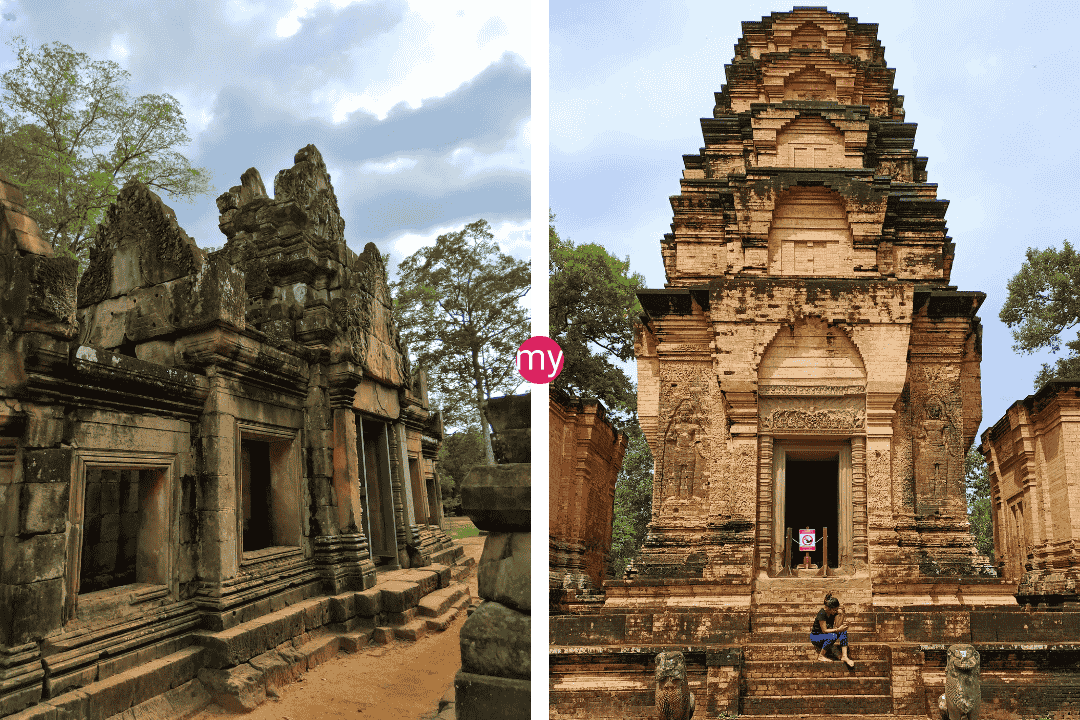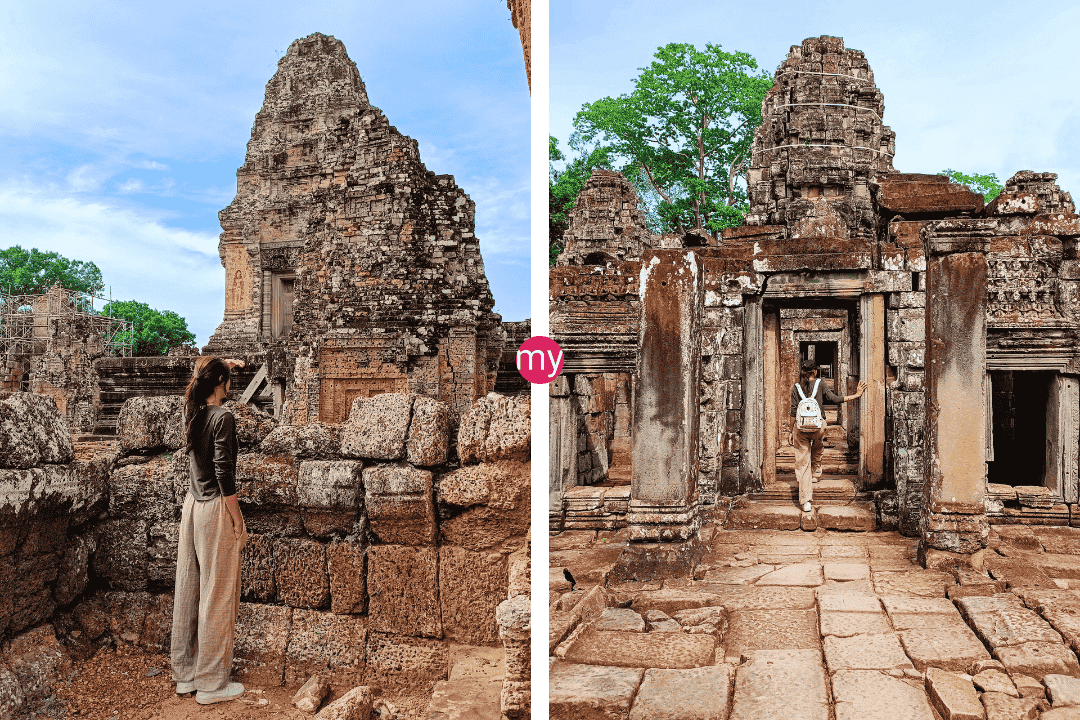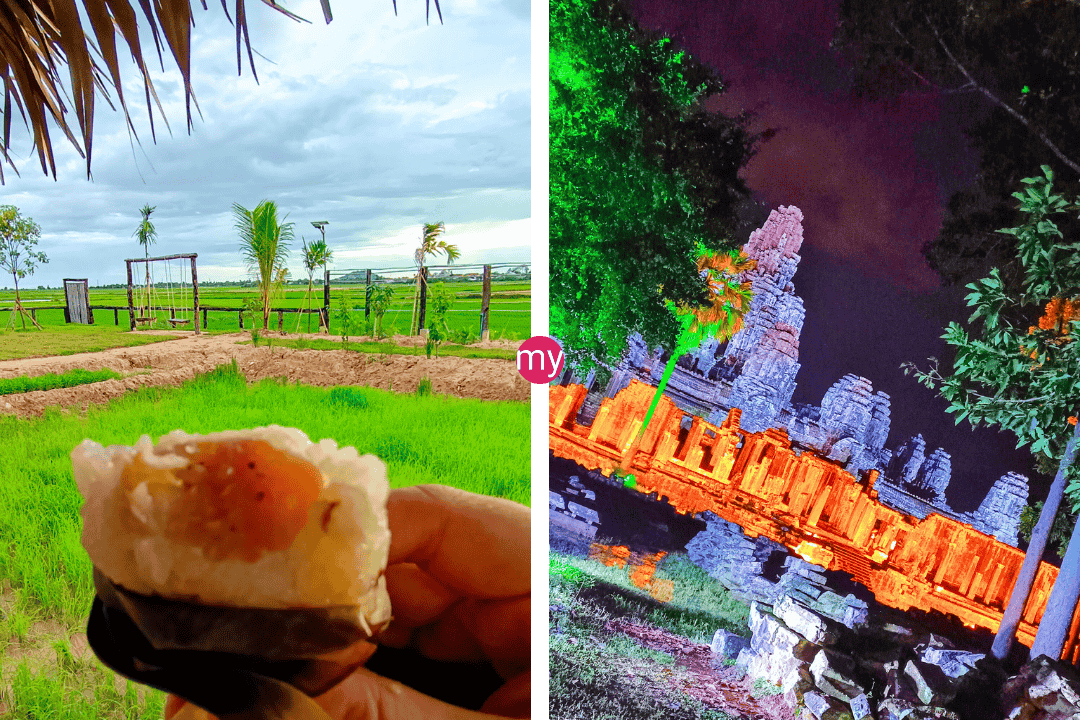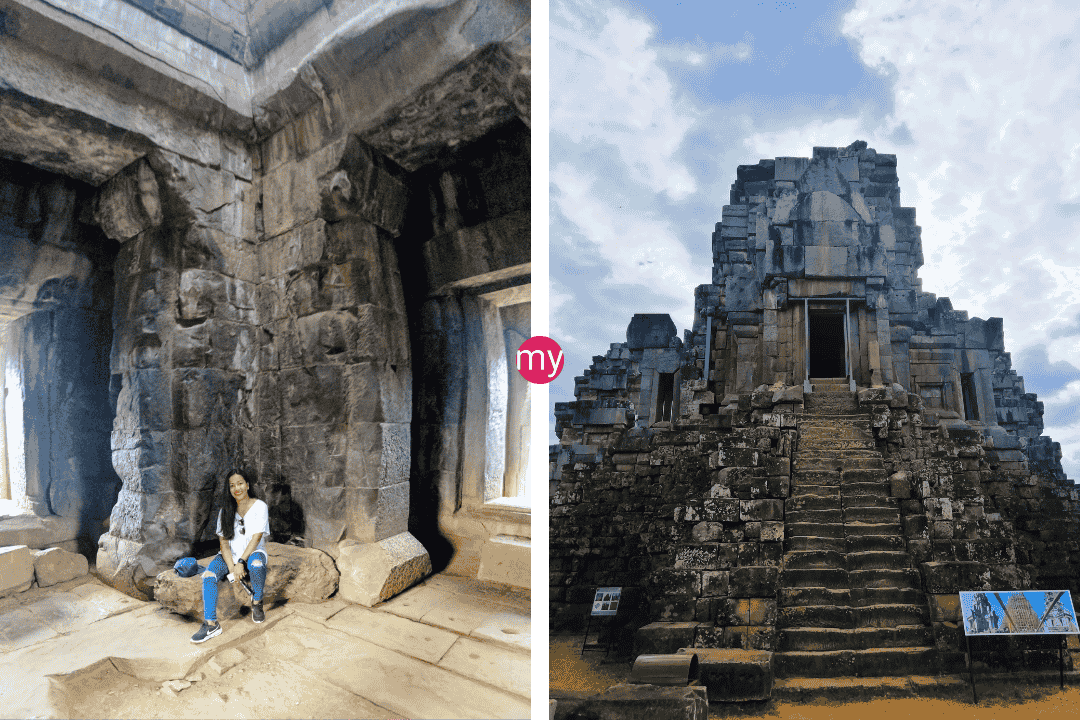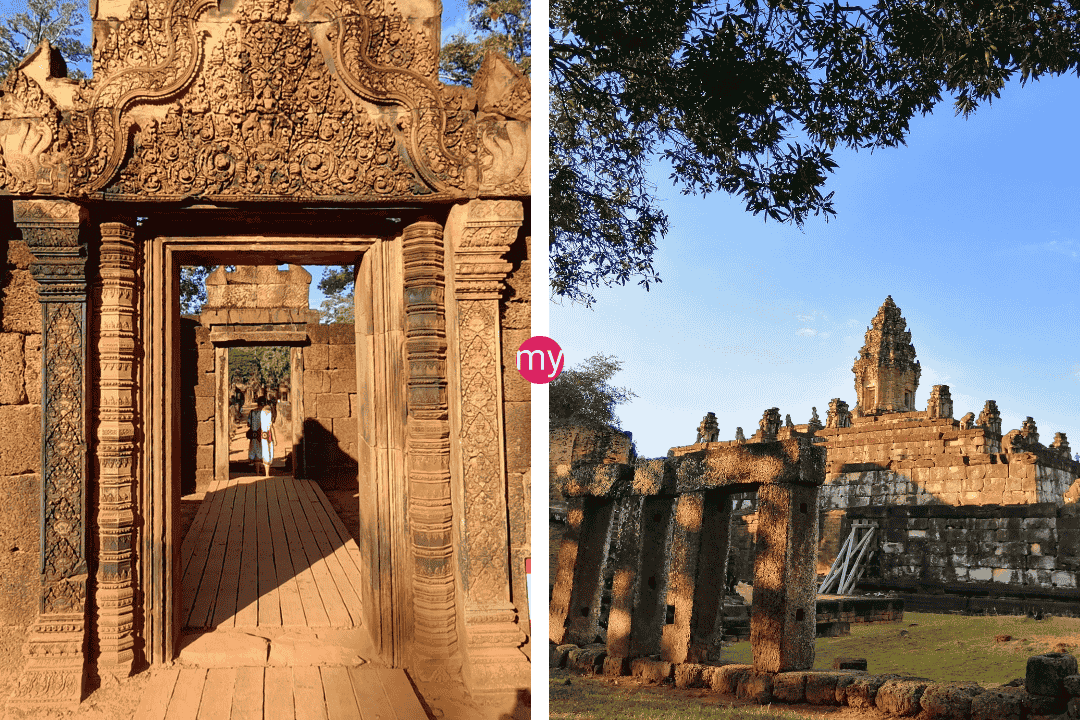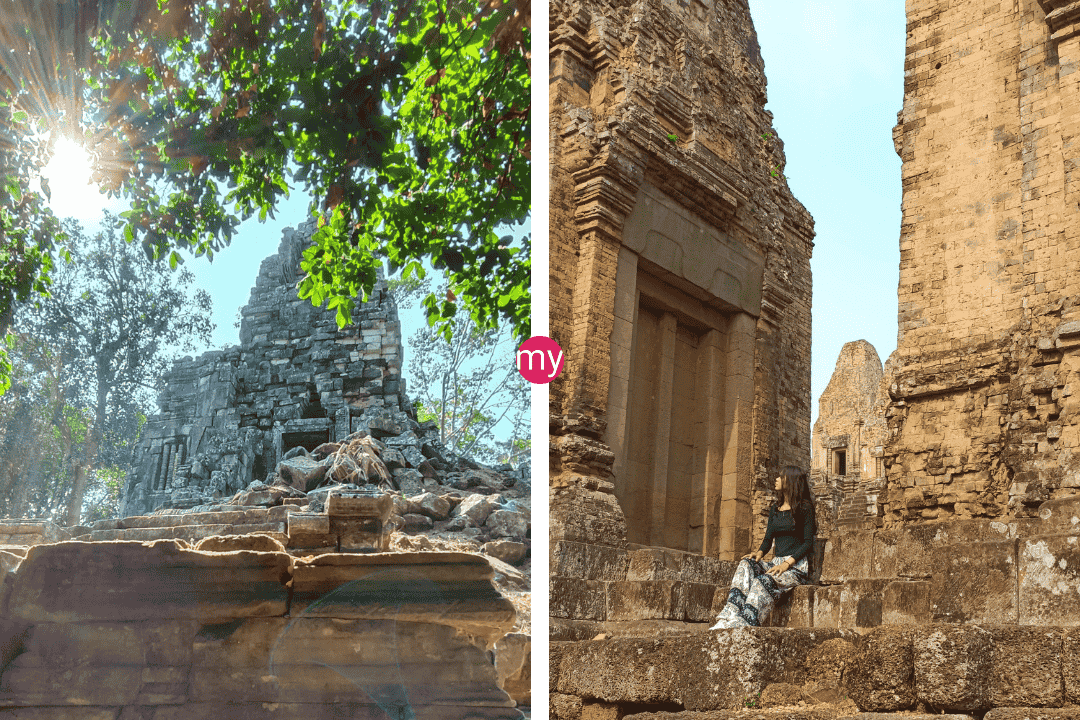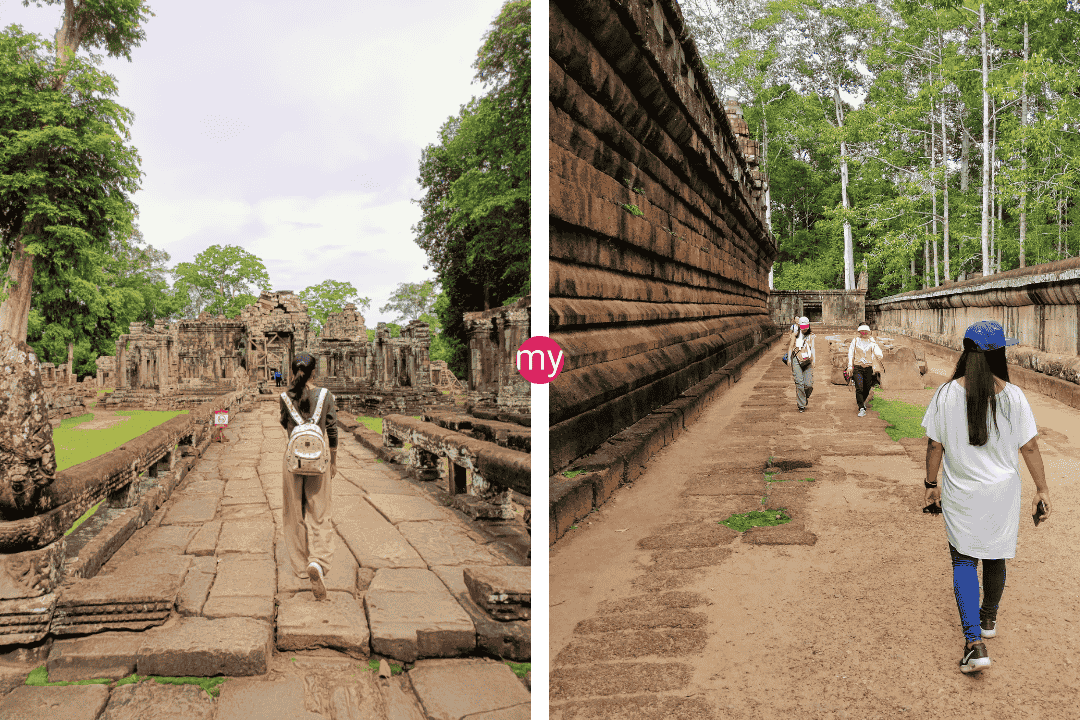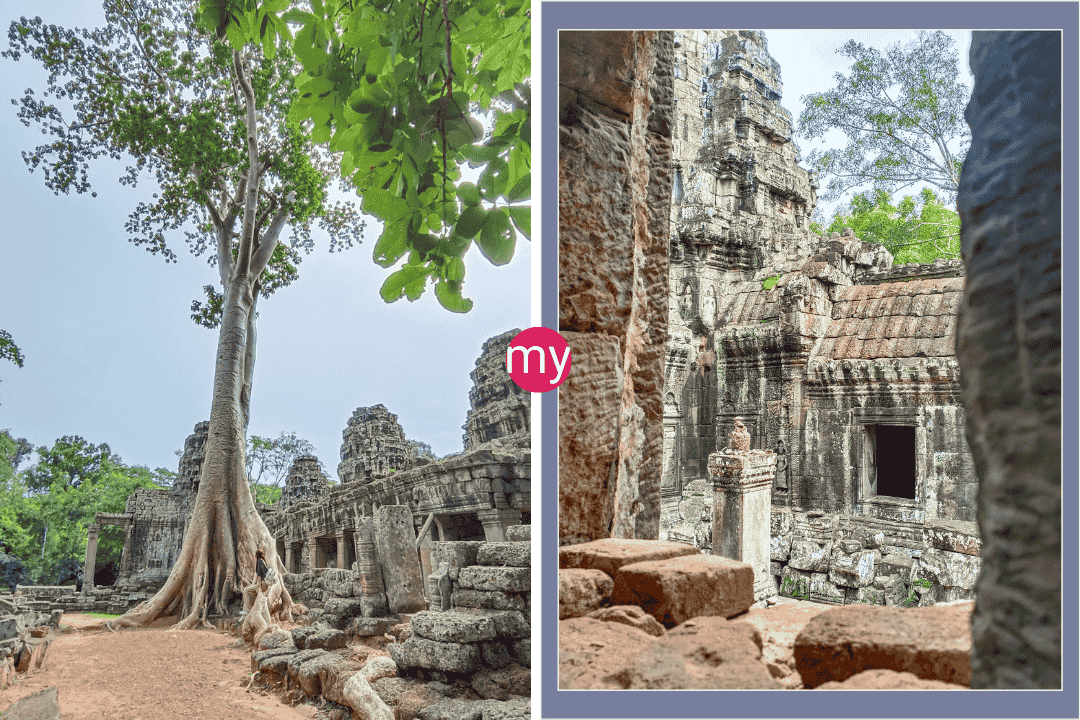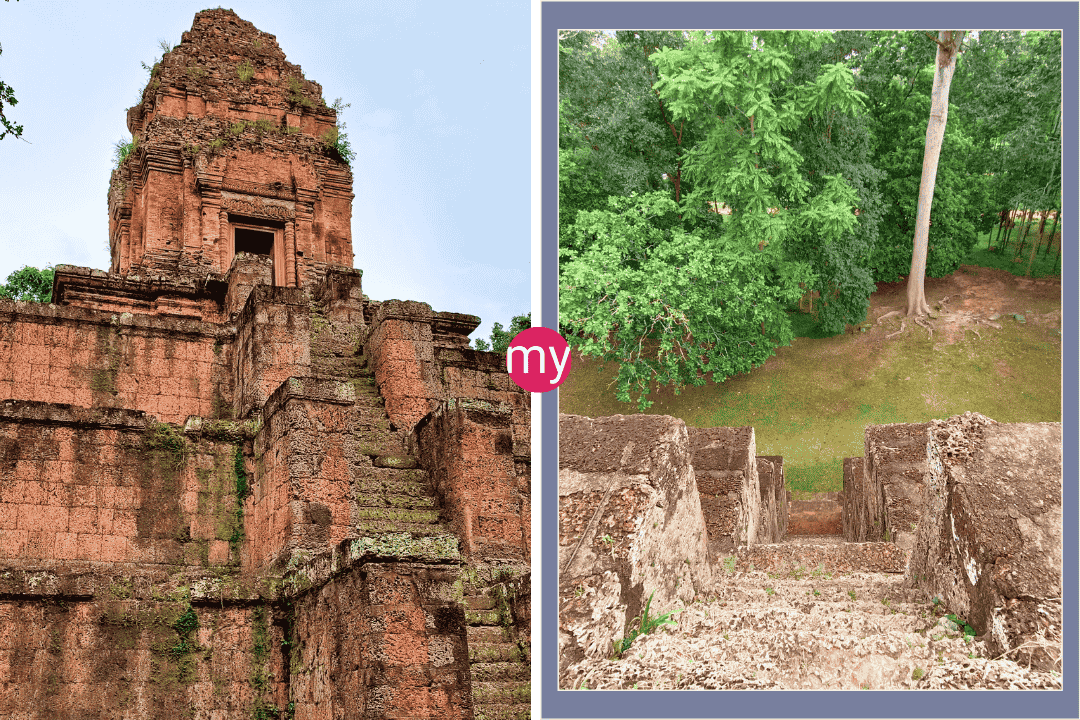Ta Keo Temple vs Pre Rup Temple: Which Iconic Angkor Ruin Should You Visit?
The magnificent temples of Angkor stand as enduring monuments to the grandeur of the ancient Khmer empire.
Among the most captivating are Ta Keo and Pre Rup – two state temples with distinctive architectures that have captured the imagination of visitors for centuries.
But what secrets do these iconic structures hold? Let’s decode and compare their origins and symbolism.
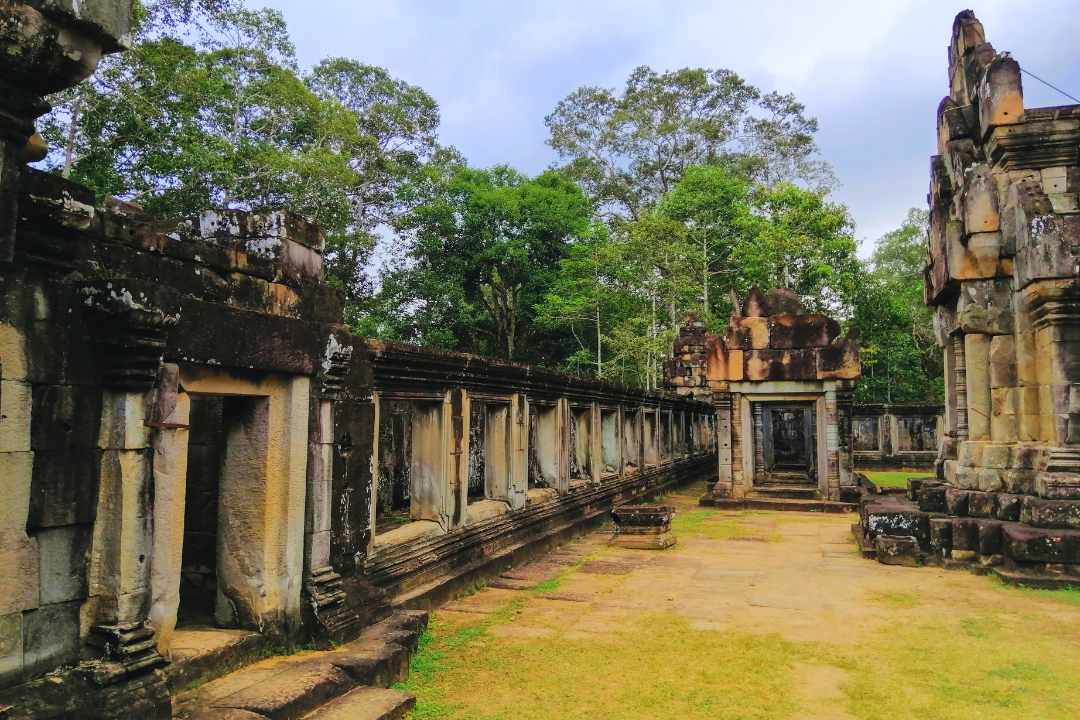
A Tale of Two Kings
Ta Keo vs Pre Rup: Decoding the Majesty of Angkor’s Iconic Temples
Ta Keo was commissioned in the late 10th century by King Jayavarman V. Intended to be the official state temple, its construction began during the capital’s move from the Roluos area to Angkor.
Pre Rup‘s foundations were laid earlier in 961 AD under King Rajendravarman II. Dedicated to Hindu gods Shiva and Vishnu, it served as the royal funerary temple associated with the king’s cremation site.
So while both were important state complexes, Ta Keo was linked to a living king while Pre Rup honoured deceased royalty.
The core question: What are the key similarities and differences between the iconic Angkor temples Ta Keo and Pre Rup in terms of history, architecture, design symbolism and engaging details for visitors?
In this comprehensive guide, we’ll decode and compare these historical Cambodian monuments to highlight their origins, significance, and secrets that modern travelers can uncover. Read on to discover the key insights in a structured format to save you research time.
Quick Takeaways Upfront:
- Ta Keo was built for King Jayavarman V as a state temple while Pre Rup honoured deceased King Rajendravarman II
- Architecturally, Ta Keo embodies the Khmer mountain temple style versus Pre Rup’s transitional pre-classical aesthetic
- Both exhibit the religiously symbolic quincunx layout of five towers
- Ta Keo impresses with its massive unfinished dimensions and panoramic views
- Pre Rup showcases superior intricate stone carvings and Buddhist motifs
We’ll now expand on comparing these majestic temples’ histories, architectures, cosmic designs, and key details that create a compelling visitor experience.
Quote: “Technologically and artistically, Pre Rup is a masterpiece of human creative genius, representing a pinnacle of achievement” – Professor Rebecca Shah, Architectural Historian at University of Chicago
For travelers seeking private adventures to these Angkor icons that elevate understanding while avoiding crowds, our iconic temples tour offers an immersive experience.
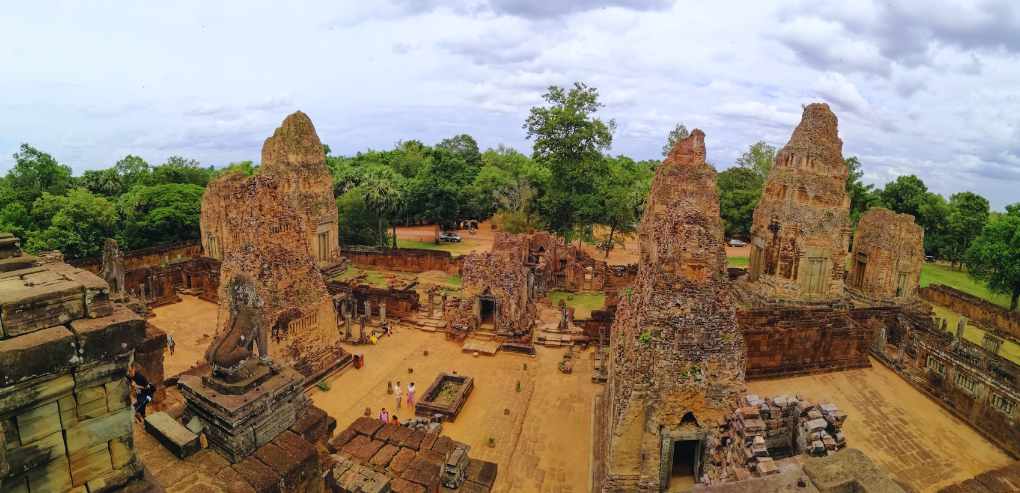
in-depth analysis:
In terms of architecture, what is the difference between Ta Keo and Pre Rup?
The architectural style of Ta Keo is known as the Khleang style, and it is distinguished by its enormous mountain temple that is only partially completed.
The temple is comprised of five sanctuary towers that are organized in a quincunx on the highest level of a pyramid with five levels. Because carving had only begun when the construction was interrupted, it is exceptionally huge due to the absence of external ornamentation.
It is constructed entirely of sandstone and does not have any external ornaments.
Pre Rup, on the other hand, is of outstanding interest both structurally and artistically.
It marks the transition from the pre-classic phase of Angkor art to the classic period of Angkor art.
The type of art that was prevalent during this time period is known as the Pre Rup style, and it is distinguished by the presence of a massive pyramid that is dominated by the warm reddish tone of laterite.
Bricks are used to construct the Prasat towers and the central sections of the Gopuram gates, while laterite is used to construct the enclosure walls and the pyramidal tiers.
As a result, Ta Keo is an example of the Khleang style, whereas Pre Rup is connected with the Pre Rup style. Both of these styles are distinguished by their own distinctive architectural qualities.
Ta Keo Temple vs Pre Rup Temple – Architectural Styles
Ta Keo exhibits the distinct Khmer temple style, shaped as a symbolic mountain and characterized by:
- Massive dimensions and extensive use of sandstone
- Quincunx arrangement (cross-shaped) of five sanctuary towers
- Richly carved bas-reliefs depicting tales from Hindu epics
- A pyramid structure of five tiers atop a hill symbolizing Mount Meru
Whereas Pre Rup ushered in a new Pre Rup architectural style defined by:
- Brick and laterite materials with sandstone embellishments
- Ornately carved false doors, lintels, and pilasters
- Enclosure walls and a central pyramid temple
So Ta Keo manifests mountain-form aesthetics while Pre Rup pioneered a transitional style leading to the classical Angkor period.
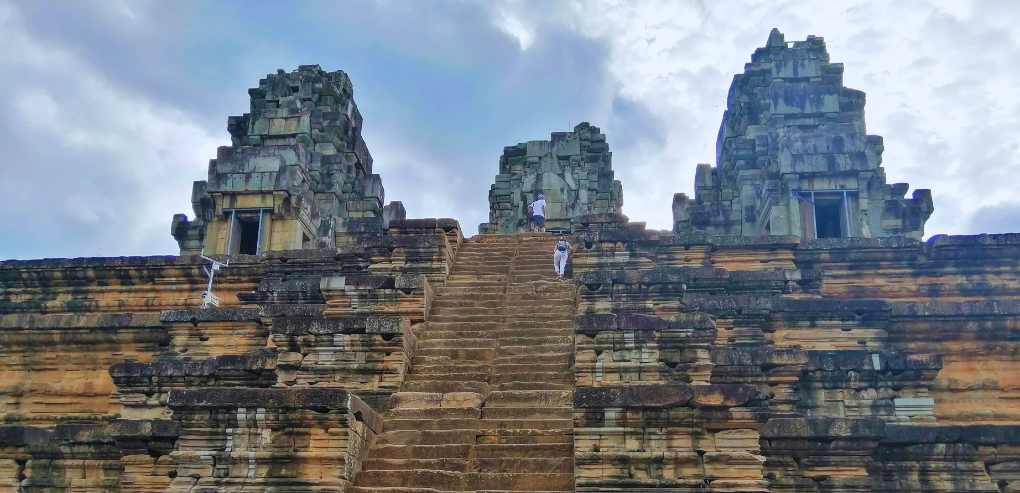
The Significance of the Quincunx
Both temples exhibit the iconic quincunx pattern – four towers at the corners with a central spire. This layout holds deep religious significance, as it forms a pyramidal shape symbolizing the structure of the Hindu cosmos.
The five towers represent sacred Mount Meru, considered the center of the universe in Khmer cosmology. The central tower is the highest and most important, housing the temple’s holiest shrines.
So the quincunx design reflects Hindu religious symbolism regarding the cosmic order, with the pinnacle expressing the upper realms of gods and heavens.
Engaging Exploration Awaits
Beyond the core architecture, several captivating details await discovery by modern travelers.
Ta Keo Allures with its Monumentality
Though left largely unfinished, Ta Keo impresses with its ambitious scale and austere beauty:
- Standing 60 meters tall, its massive terraced pyramid makes it one of Angkor’s tallest structures
- Unadorned sandstone facades give it a minimalist grandeur
- High staircases promise stunning views across the treetops
Pre Rup Offers Refined Artistry
Pre Rup seduces with intricate artistic refinement:
- Intricately carved lotus rosettes and false balustrades showcase superior craftsmanship
- Sculpted elephants on the lower tiers reflect Buddhism’s growing influence
- Symmetrical design resonates with mathematical harmony
From lofty heights to exquisite detail, these Angkor icons encapsulate Khmer creativity and devotion through the ages. Discover their magnificence for yourself!
in-depth analysis:
Within the context of the Khmer religion, what is the significance of the quincunx arrangement found in Ta Keo and Pre Rup?
An important aspect of the Khmer religion is the quincunx layout that can be found at Ta Keo and Pre Rup.
This arrangement is essential because it mirrors the symbolic representation of the universe that is found in Khmer architecture.
It is believed that the quincunx pattern, which consists of five sanctuary towers organized in a particular geometric layout, is a representation of a pyramid that represents the structure of the universe.
The highest level of the temple is represented by the center tower in the quincunx layout.
This tower is a reflection of the Khmer religious beliefs that are related with the cosmic order and the sacred nature of the architecture of the temple.
This particular architectural element is a distinguishing component of the religious symbolism of the Khmer people. It can be found in a number of temples that were constructed during the Khmer Empire, such as Ta Keo and Pre Rup.
A Note from the Author
Having scaled the soaring stairs of Ta Keo and admired the ornate stonework of Pre Rup, I am continually awed by the ambition, ingenuity and artistry of the Khmer Empire. Treasures like these temples are testaments to humanity’s creative potential – the poetry crystallized in stone. My only hope is that the modern world can learn from Angkor’s masterful marriage of engineering, aesthetics and meaning – building structures as resonant and resilient.
To venture into Angkor’s wonderland yourself, browse our array of small group tours and private adventures led by expert local guides. More intimate explorations of Ta Keo and Pre Rup are also available, such as our in-depth Pre Rup sunrise tour. Let’s venture into Angkor’s lost worlds together!
Featured
Explore more on My Siem Reap Tours
Koh Ker and Beng Mealea guided tour | Banteay Srei temple tour semi-private guided tour | Angkor Wat Sunrise shared tour | Koh Ker and Beng Mealea guided tour | Morning Siem Reap floating village tour | Afternoon Siem Reap floating village tour | Private Angkor Wat special tour | Kulen Waterfall small group guided Tour | Private Angkor Wat mix temples photo tour
